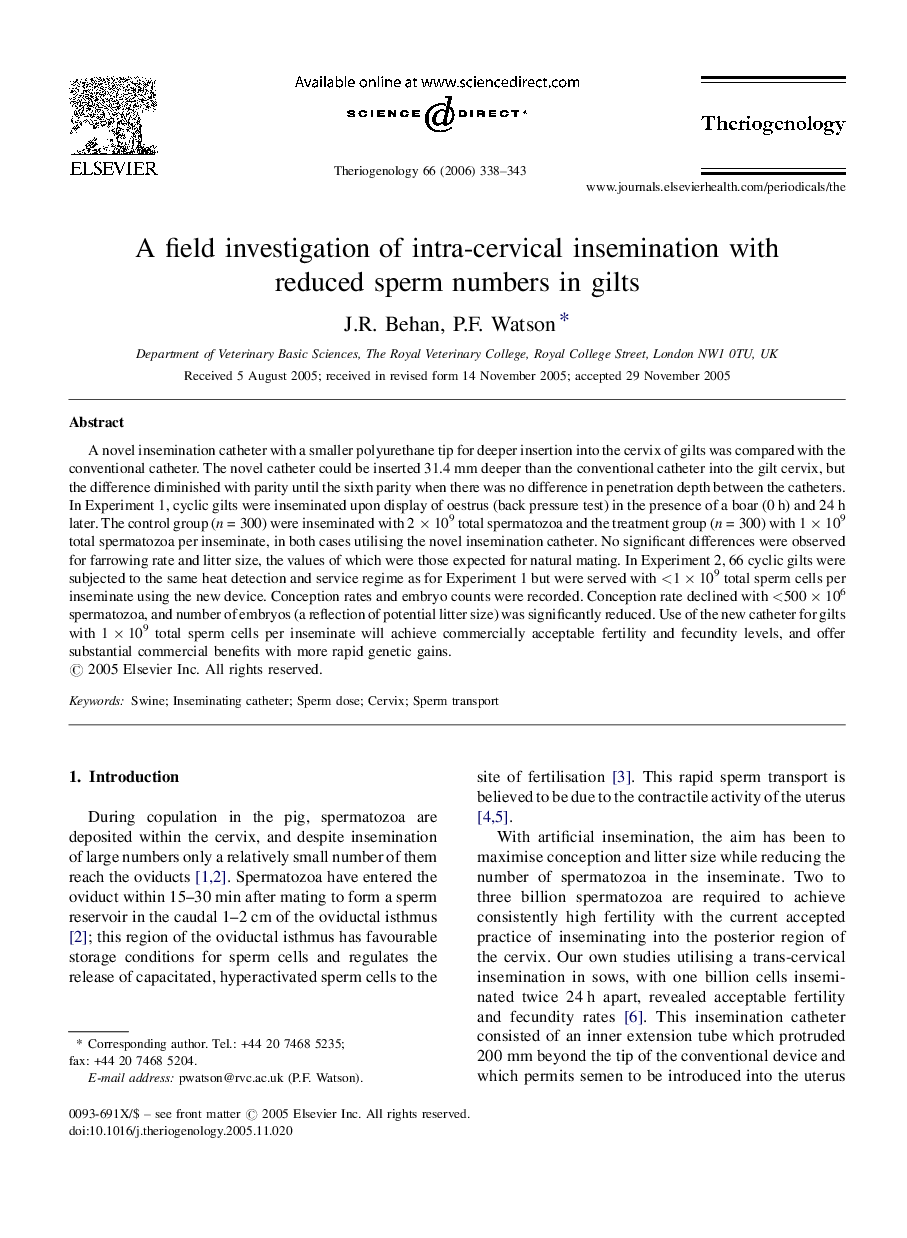| Article ID | Journal | Published Year | Pages | File Type |
|---|---|---|---|---|
| 2097085 | Theriogenology | 2006 | 6 Pages |
A novel insemination catheter with a smaller polyurethane tip for deeper insertion into the cervix of gilts was compared with the conventional catheter. The novel catheter could be inserted 31.4 mm deeper than the conventional catheter into the gilt cervix, but the difference diminished with parity until the sixth parity when there was no difference in penetration depth between the catheters. In Experiment 1, cyclic gilts were inseminated upon display of oestrus (back pressure test) in the presence of a boar (0 h) and 24 h later. The control group (n = 300) were inseminated with 2 × 109 total spermatozoa and the treatment group (n = 300) with 1 × 109 total spermatozoa per inseminate, in both cases utilising the novel insemination catheter. No significant differences were observed for farrowing rate and litter size, the values of which were those expected for natural mating. In Experiment 2, 66 cyclic gilts were subjected to the same heat detection and service regime as for Experiment 1 but were served with <1 × 109 total sperm cells per inseminate using the new device. Conception rates and embryo counts were recorded. Conception rate declined with <500 × 106 spermatozoa, and number of embryos (a reflection of potential litter size) was significantly reduced. Use of the new catheter for gilts with 1 × 109 total sperm cells per inseminate will achieve commercially acceptable fertility and fecundity levels, and offer substantial commercial benefits with more rapid genetic gains.
